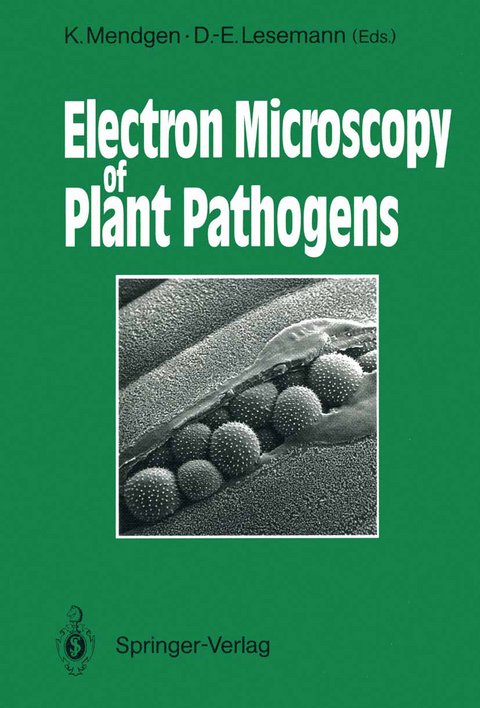
Electron Microscopy of Plant Pathogens
Springer Berlin (Verlag)
978-3-642-75820-1 (ISBN)
1 Preservation of Cell Ultrastructure by Freeze-Substitution.- 2 Low-Temperature Scanning Electron Microscopy of Fungi and Fungus-Plant Interactions.- 3 High Pressure Freezing of Rust Infected Plant Leaves.- 4 Cytochemistry of Fungal Surfaces: Carbohydrate Containing Molecules.- 5 Analytical Electron Microscopy in Plant Pathology: X-Ray Microanalysis and Energy Loss Spectroscopy.- 6 The Fine Structure of Virus Particles.- 7 Immunoelectron Microscopy for Virus Identification.- 8 Cytochemistry of Virus-Infected Plant Cells.- 9 Immunolabeling of Viral Antigens in Infected Cells.- 10 Mechanisms of Plant Virus Transmission by Homopteran Insects.- 11 Specific Cytological Alterations in Virus-Infected Plant Cells.- 12 Structure, Cellular Location, and Cytopathology of Viroids.- 13 Immunological Detection and Localization of Mycoplasma-Like Organisms (MLOs) in Plants and Insects by Light and Electron Microscopy.- 14 Interactions Between Pseudomonas and Phaseolus vulgaris.- 15 The Fate of Peripheral Vesicles in Zoospores of Phytophthora cinnamomi During Infection of Plants.- 16 Hemibiotrophy in Colletotrichum lindemuthianum.- 17 Extracellular Materials of Fungal Structures: Their Significance at Prepenetration Stages of Infection.- 18 Rust Haustoria.- 19 Infection by Magnaporthe: An In Vitro Analysis.- 20 Mycorrhizal and Pathogenic Fungi: Do They Share Any Features?.- 21 Haustoria-Like Structures and Hydrophobic Cell Wall Surface Layers in Lichens.- 22 Ultrastructure of Nematode-Plant Interactions.- 23 Infection of Plants by Flagellate Protozoa (Phytomonas SPP., Trypanosomatidae).- 24 Influence of Fungicides on Fungal Fine Structure.
| Erscheint lt. Verlag | 27.12.2011 |
|---|---|
| Zusatzinfo | XV, 336 p. |
| Verlagsort | Berlin |
| Sprache | englisch |
| Maße | 170 x 242 mm |
| Gewicht | 609 g |
| Themenwelt | Naturwissenschaften ► Biologie ► Mikrobiologie / Immunologie |
| Naturwissenschaften ► Biologie ► Zellbiologie | |
| Schlagworte | Cryofixation • electron microscopy • Elektronenmikroskopie • Fungi • Gefrierfixierung • pathogen • Pflanzen-Pathogene • plant pathogens • Protozoa • Viren • Virus • Viruses |
| ISBN-10 | 3-642-75820-7 / 3642758207 |
| ISBN-13 | 978-3-642-75820-1 / 9783642758201 |
| Zustand | Neuware |
| Haben Sie eine Frage zum Produkt? |
aus dem Bereich


